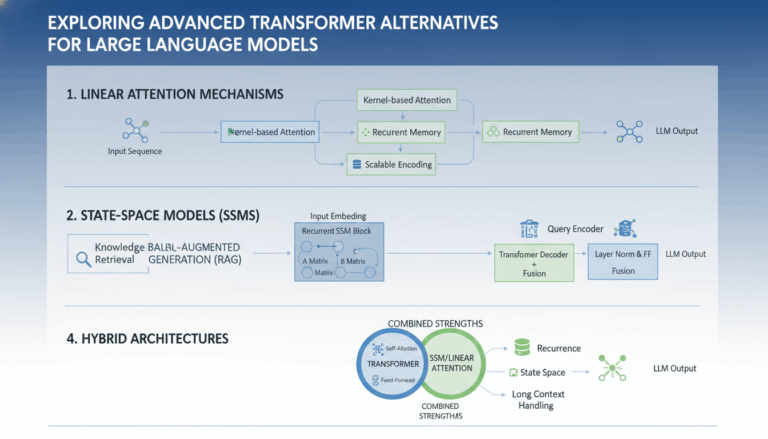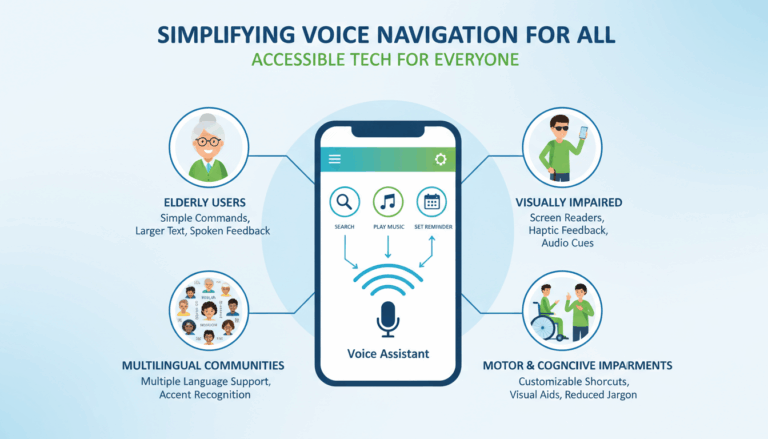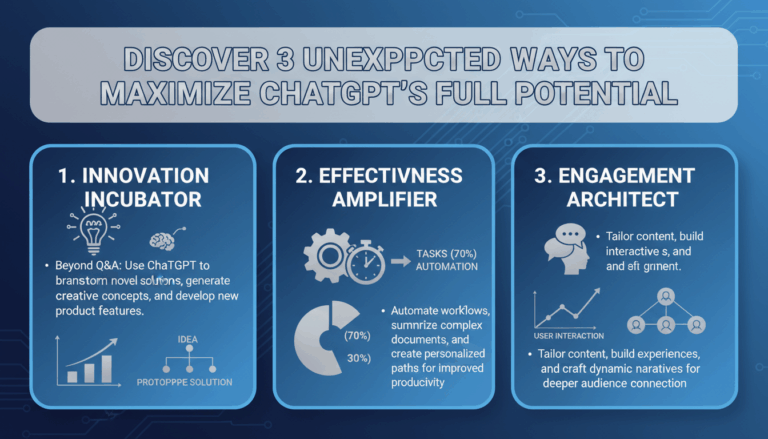Introduction to OpenAI’s Recent Advances in AI
In recent years, OpenAI has consistently remained at the forefront of technological advancements in artificial intelligence, profoundly influencing various sectors with its innovative approaches. The organization has made significant strides, particularly in natural language processing and machine learning, driving forward not only the capabilities but also the accessibility of AI technologies.
One of the most significant advances includes the release of successive versions of the GPT (Generative Pre-trained Transformer) model. These models have revolutionized the capacity of machines to understand and generate human-like text, allowing for improved interaction between humans and machines across numerous platforms. The sophistication of these models is evident in their ability to perform nuanced tasks such as content creation, customer service automation, and complex data analysis, showcasing substantial improvements in both language comprehension and output quality.
OpenAI’s focus on reinforcement learning has also been pivotal. Reinforcement learning enables AI to learn by interacting with its environment, learning from the consequences of its actions, and applying this knowledge to make better decisions over time. Demonstrations such as the OpenAI Five, which competed against human teams in the video game Dota 2, highlighted the practical application of these systems, emphasizing their potential to solve complex real-world problems.
Moreover, OpenAI has been at the forefront of ensuring AI’s ethical deployment. By integrating principles of AI safety, OpenAI has contributed robust frameworks that ensure the responsible use of AI technologies. Their emphasis on transparency, collaboration, and rigorous testing contributes to widespread confidence in AI applications while paving the way for ethical innovations in automation and machine learning.
Additionally, advancements in OpenAI Codex, which powers GitHub Copilot, represent a transformative change in how developers interact with software development tools. Codex extends beyond simple code completions, offering meaningful assistance by interpreting natural language instructions and translating them into working code snippets, thereby streamlining the development process and enhancing productivity.
The constant evolution and evaluation of OpenAI’s models reflect a core commitment to improvement and adaptability in AI technologies. This dynamic advancement not only opens up new opportunities for democratizing AI but also challenges traditional industries by proposing scalable, intelligent alternatives to conventional processes. The organization’s expansive research efforts continue to reshape the landscape of AI, setting the stage for new developments that might soon redefine workflows globally.
The Evolution of Workflow Automation: From Traditional Methods to AI Integration
Workflow automation has undergone a profound transformation from traditional manual methods to the sophisticated integration of artificial intelligence (AI). Initially, workflow processes in businesses were largely manual, requiring significant human intervention to handle basic tasks such as data entry, scheduling, and document management. These methods were labor-intensive and often prone to human error, which affected efficiency and overall productivity.
Traditional Workflow Methods
Initially, workflow management depended heavily on physical documents and face-to-face communications. Procedures were often governed by static rulebooks and linear checklists, with information and documentation flowing in a rigid, hierarchical manner. This approach, while successful for decades, was limited in its ability to scale and adapt to rapidly changing business environments. Additionally, these traditional systems offered little in terms of analytics or insights into process improvement, which inhibited the ability to streamline operations over time.
The introduction of desktop computers and basic software tools gradually improved this scenario. Applications like Microsoft Excel and Access provided rudimentary automation capabilities, allowing for some degree of process streamlining through formulas and simple scripts. However, these tools required substantial manual configuration and were limited to localized, specific tasks.
The Rise of Digital Workflow Solutions
By the late 20th century, there was a marked shift towards digital solutions aimed at alleviating the inefficiencies of manual workflows. This era saw the emergence of enterprise resource planning (ERP) systems, customer relationship management (CRM) platforms, and other business process management (BPM) software. These systems moved business processes into digital environments, enabling a degree of automation that reduced reliance on paper documents and direct human oversight.
Mainframe computers and network technologies facilitated data centralization and allowed organizations to manage workflows more effectively across multiple departments. This era also marked the birth of collaborative tools like email and networked file sharing, which started to break down the silos of information and enabled more fluid communication among team members.
While these digital tools represented significant advancements, they were often costly and complex to implement, limiting their accessibility to large enterprises. Nonetheless, they laid the groundwork for more scalable and sophisticated systems that would follow.
The Impact of Artificial Intelligence on Workflow Automation
The integration of AI into workflow automation brought about transformative changes, paving the way for unprecedented levels of efficiency and adaptability. One of the most significant advantages of AI-driven automation is its ability to perform complex tasks without explicit programming—a major leap from rule-based automations.
Generative AI and machine learning models are now capable of making decisions based on real-time data analysis, allowing workflows to be dynamically adjusted to optimize outcomes. For example, AI can analyze customer interactions, predict metrics like demand forecasting, and adjust supply chain operations accordingly. This level of agility was unimaginable in traditional workflows.
AI and the Modern Workflow Automation
For businesses, the implementation of AI-powered tools, such as bots equipped with natural language processing capabilities, has redefined customer service operations. AI-powered chatbots can handle diverse customer queries, providing immediate responses and learning from interactions to enhance future communication.
Additionally, AI integration into workflow automation supports advanced data analytics. Predictive analytics models can sift through voluminous datasets to uncover patterns and offer actionable insights, enabling businesses to preemptively address issues and capture opportunities. This analytical prowess enhances decision-making accuracy and strategic planning.
Moreover, AI’s ability to learn and adapt gives businesses a competitive edge by continuously improving process efficacy. For instance, AI algorithms can optimize staff scheduling, inventory management, and even personalize marketing campaigns based on consumer behavior insights, driving efficiency and growth.
In conclusion, while traditional methods laid the foundational stone for workflow processes, the integration of AI has propelled workflow automation into a new era of intelligence and adaptability. This evolution not only exemplifies technological innovation but also highlights the ongoing shift towards smarter, more adaptive business environments.
OpenAI’s Impact on the $20 Billion Workflow Automation Market
OpenAI’s innovations in artificial intelligence are having a profound influence on the workflow automation market, valued at approximately $20 billion, by driving accelerated automation and enhancing efficiencies in business processes across various industries.
Harnessing the power of OpenAI’s comprehensive language models, companies are able to automate complex, cognitive tasks that were traditionally thought to require human intervention. For example, customer service departments have rapidly adopted AI-driven chat systems. These systems leverage OpenAI’s natural language processing (NLP) capabilities to interact with customers in real-time, offering solutions to common queries without delay. As a result, companies can reduce reliance on large call center teams and reassign human resources to more strategic tasks, effectively lowering operational costs while maintaining high customer satisfaction.
Moreover, OpenAI’s models are pivotal in streamlining document processing workflows. Traditionally, processing large volumes of documents involved significant human labor to review, extract, and enter data into systems manually. OpenAI-based systems can rapidly read and categorize documents, extract relevant data, and integrate it directly into digital systems with remarkable accuracy. This not only accelerates the entire document lifecycle but also minimizes errors, thereby improving compliance and data accuracy.
The integration of OpenAI’s machine learning algorithms into predictive analytics has transformed how businesses forecast demand and manage supply chains. By analyzing historical data and current market trends in real time, AI-driven models provide actionable insights that help businesses anticipate changes in demand, optimize inventory levels, and streamline logistics to reduce waste and improve service delivery. This type of real-time adaptive workflow was largely unattainable with traditional automation tools.
Furthermore, through reinforcement learning models, OpenAI allows businesses to dynamically adjust workflows based on evolving patterns and outcomes. As environmental variables change, these models learn and evolve, ensuring that business processes continuously improve over time. This adaptability is integral to businesses that operate in fast-paced or highly variable markets where agility is crucial.
The influence of OpenAI also extends to personalized user experiences in marketing workflows. By analyzing consumer data and behavior, AI systems can customize marketing messages and campaigns to effectively target different segments, increasing engagement rates and conversion metrics dramatically. This level of personalization is an asset in the competitive landscape where customer experience dictates brand loyalty.
Additionally, OpenAI’s innovation in collaborative tools such as GitHub Copilot streamlines not just software development but also introduces efficiencies in IT workflows. Developers receive real-time suggestions and can automate portions of coding tasks, accelerating project timelines and reducing errors through intelligent code assessment.
Overall, OpenAI’s impact on the workflow automation market is not just about replacing existing processes but actively redefining them to unlock new levels of productivity and creativity. By integrating these cutting-edge AI capabilities, businesses are poised to harness the full potential of automation, achieving unprecedented operational efficiencies and competitive advantages in the evolving market landscape.
Case Studies: Businesses Transforming Operations with OpenAI’s AI Solutions
One inspiring example of businesses transforming their operations with OpenAI’s AI solutions can be seen in the retail industry. ChatGPT, as part of OpenAI’s offerings, has seen extensive deployment in customer service operations, enabling retailers to interact more effectively with their consumers. For instance, a leading global fashion brand implemented ChatGPT-driven chatbots to handle customer inquiries 24/7. These AI-powered systems efficiently manage thousands of queries simultaneously, reducing wait times significantly and allowing human agents to focus on more complex issues, thus enhancing customer satisfaction and loyalty.
Another sector making strides through OpenAI’s AI is the financial services industry. JPMorgan Chase, a giant financial institution, utilizes OpenAI’s AI solutions for automating routine document processing tasks. By integrating AI-driven text analysis, the bank can swiftly categorize and process vast amounts of data from financial documents, improving turnaround times for client transactions and reducing errors. This transformation has not only sped up operations but also allowed them to reassign human resources to strategic decision-making roles, thereby improving overall operational efficiency.
In the healthcare field, businesses are also seeing transformative results. A digital health company that develops personalized healthcare solutions leverages OpenAI’s machine learning models to analyze patient data for better diagnostics and treatment recommendations. These AI tools can sift through enormous datasets to identify patterns that would be time-consuming and challenging for human analysts. As a result, healthcare providers can offer more timely and accurate care plans to patients, significantly enhancing patient outcomes and operational efficiency.
Moreover, in the manufacturing sector, companies are harnessing OpenAI’s deep learning capabilities to optimize supply chain operations. For instance, a major automotive manufacturer incorporated AI models to enhance predictive maintenance operations, effectively forecasting equipment failures before they occur. This predictive capability stems from analyzing real-time data streamed from machinery, minimizing downtime, and reducing maintenance costs. Such deployment not only transforms maintenance operations but also maximizes overall product quality and production efficiency.
In digital content creation, media companies are exploiting OpenAI’s AI solutions like DALL-E for generating creative visuals and AI models for automating editing processes. These advancements have revolutionized how content is produced, enabling faster turnaround times while maintaining high quality. A media outlet uses AI-generated imagery to quickly adapt content to different audiences, allowing for more tailored and effective engagement strategies.
These cases illustrate the profound impact of OpenAI’s AI solutions across diverse industries, showcasing a shift towards more intelligent, efficient, and responsive business operations. They underline how AI doesn’t merely enhance existing processes but rather enables entirely new capabilities, offering companies a decisive edge in today’s competitive market.
Challenges and Considerations in Adopting AI for Workflow Automation
Adopting artificial intelligence for workflow automation can be a transformative decision for organizations, offering significant enhancements in efficiency and productivity. However, several challenges and considerations must be carefully navigated to achieve a successful integration.
Implementing AI systems involves substantial technical, financial, and strategic costs. One major hurdle is the initial investment in AI technology, which can be expensive. Organizations must budget not only for the procurement of AI tools but also for the necessary infrastructure to support them. This includes robust computing power, data storage solutions, and network capabilities that can handle the high demands of AI algorithms. Additionally, the integration process often requires specialized expertise, either through staff training or the hiring of AI specialists, which can further increase costs.
Another critical consideration is data management. AI systems require vast amounts of data to function optimally, and the quality of this data is paramount. Organizations need to ensure that their data is accurate, relevant, and comprehensive. This involves setting up rigorous data governance frameworks to collect, store, and process data in ways that maximize its utility while complying with regulatory requirements. Poor data quality can lead to erroneous AI outputs, negating any potential benefits of automation.
Data privacy and security also pose significant concerns. As AI systems often process sensitive information, they become targets for cyber-attacks. Therefore, organizations must implement stringent security measures to protect their data and ensure compliance with laws such as the General Data Protection Regulation (GDPR) or the California Consumer Privacy Act (CCPA). This includes encryption, regular security audits, and the development of contingency plans for potential data breaches.
Ethical considerations are becoming increasingly important in AI adoption. There is a need to ensure that AI systems operate without bias and discrimination. This requires organizations to adopt transparent practices and establish ethical guidelines that AI systems must adhere to. Implementing bias detection and mitigation strategies is essential to maintain fairness and build trust with users and consumers.
Cultural resistance within an organization can also hinder successful AI implementation. Employees may fear job displacement or feel apprehensive about changing workflows. To address this, it’s crucial to foster an organizational culture that embraces technological change. Providing comprehensive training and reskilling opportunities can help staff feel more secure and engaged in the new AI-driven environment.
Moreover, the scalability and adaptability of AI solutions are paramount. Organizations need to plan for future growth and changing business needs by choosing AI systems that can scale seamlessly and adapt to new challenges over time. This involves ongoing evaluation and iteration of AI processes to ensure they remain effective and relevant.
In summary, while AI presents immense opportunities for workflow automation, careful planning and strategic consideration of these challenges are necessary to harness its full potential effectively. Organizations that proactively address these issues may find themselves at the forefront of innovation and efficiency in their respective industries.
Future Outlook: The Role of AI in Shaping Workflow Automation Trends
As artificial intelligence continues to evolve, its role in shaping the next generation of workflow automation is becoming increasingly profound. AI’s integration is not just enhancing current processes but is also crafting new paradigms that could redefine how businesses operate. This transformation is influenced by several key trends and emerging technologies.
The first trend is AI’s ability to drive hyper-personalization in workflows. Modern AI algorithms, particularly deep learning techniques, allow for highly personalized and adaptive workflows. By analyzing vast amounts of data from user interactions, AI systems can tailor processes to individual preferences and behaviors, allowing businesses to offer uniquely tailored experiences. This personalization extends beyond customer-facing operations, influencing internal workflows such as HR processes and employee training, where AI adapts to individual learning curves and employee engagement patterns.
Improvements in natural language processing (NLP) are another critical trend. Advanced NLP models are enhancing communication between human operators and machines, making interactions more intuitive and efficient. This capability is transforming customer service, as AI-driven virtual assistants can manage increasingly complex queries. Beyond customer service, NLP enhances team collaboration tools by automating routine communication tasks and offering real-time language translation, facilitating smoother operations in globalized business environments.
Predictive analytics powered by AI is revolutionizing decision-making processes. These tools can analyze historical and real-time data to forecast trends and outcomes with remarkable accuracy. In manufacturing, predictive analytics is used to optimize supply chains by anticipating demand fluctuations and minimizing stock shortages. In finance, these models predict market trends, aiding in more strategic investment decisions. As data becomes the nucleus of business strategy, predictive capabilities are indispensable.
Another significant aspect is robotic process automation (RPA) integrated with AI algorithms. While RPA automates repetitive, rule-based tasks, its combination with AI enables it to handle more complex operations that require cognitive decision-making. This synergy enhances process efficiency and accuracy, especially in sectors like banking where AI-driven RPA has automated mortgage processing and compliance checks.
AI’s role in ensuring operational resilience through automation is also emerging as a vital trend. In a rapidly changing business landscape, AI helps organizations quickly adapt to unexpected disruptions, such as shifts in consumer demand or supply chain interruptions. AI tools enable businesses to redesign workflows dynamically, ensuring continued operation while managing risks and maintaining service levels.
Moreover, AI’s contribution to fostering innovation within workflows is becoming increasingly evident. AI is driving creativity and new solution development by automating routine tasks, thus freeing up human resources to focus on more inventive aspects of the business. This shift encourages innovation in product development, marketing strategies, and customer engagement models.
Finally, the use of AI to enhance security within workflow automation is gaining prominence. AI systems are equipped to detect anomalies and potential security threats within workflows, allowing businesses to act proactively in protecting their data and operations. As cybersecurity threats become more prevalent, AI-driven security solutions are crucial in maintaining the integrity and trustworthiness of automated processes.
Overall, AI is not just integrating into existing workflows but is fundamentally altering the landscape of workflow automation. As AI technology advances, its potential to drive innovation, efficiency, and resilience is vast, heralding a new era where intelligent automation becomes the cornerstone of strategic business operations. The companies that effectively harness these capabilities will likely lead the way in shaping the future of the global economy.



